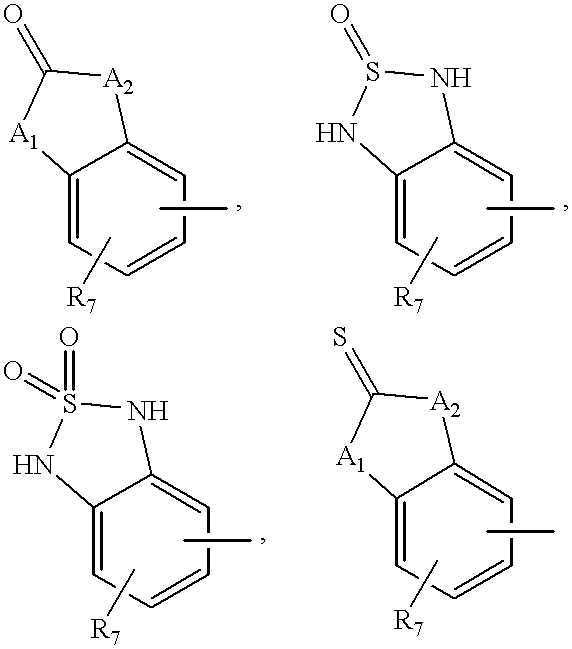Selective beta3 adrenergic agonists
a beta3 adrenergic and selective technology, applied in the field of selective beta3 adrenergic agonists, can solve the problems of poor patient compliance, no approved medications that adequately, and no clinically proven effective drugs, and achieve the effect of sufficient purity
- Summary
- Abstract
- Description
- Claims
- Application Information
AI Technical Summary
Problems solved by technology
Method used
Image
Examples
preparation 1
(S)-3-(2-Amino-3-nitrophenoxy)-1,2-epoxypropane
A solution of 2-amino-3-nitrophenol (5.95 g, 38.6 mmol) and (2S)-(+)-glycidyl 3-nitrobenzenesulfonate (10.0 g, 38.6 mmol) in 150 mL of acetone was treated with 1.1 equivalents of K.sub.2 CO.sub.3 (5.86 g, 42.4 mmol) and stirred at reflux for 18 hours. The suspension was cooled to ambient temperature; the solids were filtered; and the filtrate concentrated in vacuo to dryness. The resulting solids were partitioned between chloroform and water, and the aqueous layer extracted once with chloroform. The organic layers were combined and dried over Na.sub.2 SO.sub.4 and concentrated in vacuo to 8.0 g (99%) of an orange solid. TLC (R.sub.f =0.5, CHCl.sub.3) and NMR indicated >95% purity, so the material was used without further purification. NMR.
preparation 2
(S)-[3-(N,N-Dibenzylamino)-2-hydroxypropoxy]-2-amino-3-nitrobenzene
(S)-3-(2-Amino-3-nitrophenoxy)-1,2-epoxypropane (8.0 g, 38.1 mmol) was dissolved in 250 mL of methanol and treated with dibenzylamine (8.05 mL, 42.0 mmol, d=1.026). The mixture was stirred at reflux for 10 hours and then cooled to 0.degree. C. The resulting orange precipitate was filtered and washed with cold methanol, then dried to yield 12.1 g (78%) of a pale orange solid that was pure by NMR and TLC analysis. The material was used without further purification. NMR.
preparation 3
(S)-[3-(N,N-Dibenzylamino)-2-hydroxypropoxy]-2,3-diamino benzene
(S)-[3-(N,N-Dibenzylamino)-2-hydroxypropoxy]-2-amino-3-nitrobenzene (10.6 g, 26.0 mmol) was suspended in 1 L of 2:1 ethanol / water at ambient temperature and treated with excesses of sodium bicarbonate (26.22 g, 0.31 mol) and sodium hydrosulfite (54.34 g, 0.31 mol). The orange reaction mixture slowly became colorless over 1 hour, and the mixture was left to stir at ambient temperature for 16 hours. The suspension was filtered, and the filtrate concentrated in vacuo to a leave a white solid. This residue was partitioned between chloroform and water, and the organic layer washed twice with brine. The combined organic extracts were concentrated in vacuo to give 8.8 g of a brown oil. The compound was recrystallized rapidly from toluene to give 7.96 g (81%) of pale brown needles. NMR.
PUM
 Login to View More
Login to View More Abstract
Description
Claims
Application Information
 Login to View More
Login to View More - R&D
- Intellectual Property
- Life Sciences
- Materials
- Tech Scout
- Unparalleled Data Quality
- Higher Quality Content
- 60% Fewer Hallucinations
Browse by: Latest US Patents, China's latest patents, Technical Efficacy Thesaurus, Application Domain, Technology Topic, Popular Technical Reports.
© 2025 PatSnap. All rights reserved.Legal|Privacy policy|Modern Slavery Act Transparency Statement|Sitemap|About US| Contact US: help@patsnap.com



